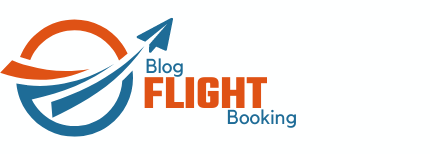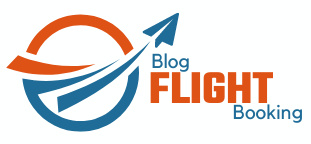Why Annecy Has Become an Essential Stop on My Festival Calendar
When people ask me what my favorite film festival is, I know what they expect to hear: something upscale and exclusive, like Venice or Cannes, with their red carpet premieres and interminable standing ovations, where the winning filmmaker goes home with a golden something-or-other, be it a lion, a bear or the Palme d’Or.
What they don’t expect to hear is that the top stop on my travel calendar is, in fact, Annecy, which isn’t a traditional film festival at all, but more of a cross between Comic-Con and Cannes, dedicated entirely to animation.
Personally, I believe that animation is the purest form of cinema there is. Unlike the vast majority of filmmaking, where you point a camera at something that exists — what we think of as “live action” — with animation, you start with a blank page (or screen), and everything that appears on it must be drawn, sculpted or invented whole cloth. From “Snow White” to stop-motion, everything is extrapolated directly from the imagination, as artists use a mind-boggling number of ways to cheat the impression that their creations are alive.
It’s magic. And Annecy is the festival that honors that wizardry best, dedicating a week to every kind of animation you can imagine — long and short, whether made for the big screen or small. It doesn’t matter if it’s primitively rendered by hand or cutting-edge computer-assisted fare, all are welcome, with so many surprising variations in between (from Michel Ocelot’s paper cutout style to the living painting approach of “Loving Vincent”).
A few decades ago, animation might have seemed like a niche sliver of the overall film industry, perhaps even a dying medium. The golden age of Disney was behind us, and animation divisions at DreamWorks and Warner Bros. were struggling. But ever since Pixar revolutionized the form, demonstrating the “to infinity and beyond” potential of computer animation with “Toy Story” 30 years ago, Hollywood studios have embraced toons in a big way.
Last year, four of the six top-grossing films were animated — “Inside Out 2” and “Moana 2” made more than a billion dollars apiece, while “Despicable Me 4” and “Mufasa: The Lion King” were close behind — and just this spring, CG Chinese blockbuster “Ne Zha 2” set an all-time box office record, earning just shy of $1.9 billion. As Porky Pig might say, that’s buh-buh-billion with a B.
Small wonder then that Annecy draws an even bigger American studio presence than Cannes each year. Granted, it was a big deal when Jeffrey Katzenberg brought “Shrek” to Cannes, and Pixar launched “Elemental” and “Up” on the Croisette — all signs that animation is not unwelcome at the prestigious French film festival. But a few weeks later in Annecy, you’ll find more Academy members in attendance, plus Disney/Pixar, Warner, Universal (which owns both Illumination and DreamWorks), Paramount/Nickelodeon and Netflix not only presenting new work, but also recruiting talent from screenings and networking events at the International Animation Film Market (or MIFA).
It doesn’t hurt that Annecy itself is such a stunning town, located just half an hour from Geneva on the east side of France. The festival’s main venue, the Bonlieu, looks out over a beautiful alpine lake, glacier-cold even in summer. (Fun fact: American independent animator Bill Plympton makes a habit of plunging into the chilly water every morning when he visits, and you can rent paddle boats or go paragliding over the lake, if you have a free afternoon.) On the lawn between the theater and the water’s edge, a giant inflatable screen plays classic animated features every night, attracting enthusiastic young crowds — it’s the kind of setup that puts Cannes “Cinéma de la Plage” seaside screenings to shame.
Little by little, Cannes (which takes place three weeks before on the Côte d’Azur) has boosted the presence of animated movies within the selection, expanding from the token toon to a small handful of entries — a trend that I wholeheartedly applaud. For example, in 2024, future Oscar winner “Flow” premiered in the Un Certain Regard section, while Michel Hazanavicius’ “The Most Precious of Cargoes” landed a coveted spot in competition.
Still, such films are easily overshadowed in a selection of more than 100 films, which gives the impression of sticking a master like Sylvain Chomet (the “Triplets of Belleville” director whose Marcel Pagnol biopic “A Magnificent Life” was my most anticipated film of the fest this year) at the kids’ table. Annecy puts those same artists on a pedestal, even as the festival opens its arms to audiences of all kinds. To gain access to a Cannes screening, you must belong to the film industry in some way, whereas Annecy is open to the general public, with attendance surging every year — to more than 17,400 at last count.
I first made the pilgrimage to Annecy in 2010, which was not just the event’s 50th anniversary, but a turning-point edition as well, boasting the world premiere of “Despicable Me.” That was a huge get for a festival that took place every other year early on, back when there was hardly enough animation being produced to support an annual event. Premieres weren’t the focus back then, when the aim was to assemble the industry and showcase the best of the form. Illumination established a precedent that year, and Annecy has since hosted many world premieres (including “Memoir of a Snail” and “The Day the Earth Blew Up” in 2024), with Netflix now using it to launch both their toon slate and one or two big features (Genndy Tartakovsky’s “Fixed” will launch there this year, following “Nimona” and “The Sea Beast” in past editions).
I’ve attended roughly every other year since 2010, during which time, I’ve gotten undeniably older. Meanwhile, the Annecy audience remains forever young — not children, mind you, but college-aged cartoon fans and aspiring professionals. The MIFA, in particular, attracts animation students from all over the world, looking to network and show their portfolios to potential employers.
The vast majority come from France, which makes sense; Annecy is just a train ride away from top animation schools like Gobelins (in Paris), the Arles-based MoPA (formerly Supinfocom) and ESMA. It’s perfectly logical that such a festival should happen here, since France recognizes the incredible artistry of formats like comics (bandes dessinées) and animation, which tend to be seen as “second class” in other countries. I’m always inspired when I see these students, sketching in their Moleskine notebooks along Lake Annecy, as I dash between events.
They bring a unique kind of energy to the festival, vibrating with excitement as they practice a number of rowdy pre-screening rituals unique to Annecy. First, there are the paper airplanes, which moviegoers fold into long-range darts and launch from their seats. Most nosedive within seconds, nailing whoever’s seated below in the back of the head, but occasionally, one of these crudely engineered origami aircraft soars from a back row all the way to the stage, igniting a spontaneous round of applause. Cannes has its 10-minute ovations; at Annecy, the audience cheers itself.
You also learn to recognize the eclectic assortment of barnyard noises and cheek-pop water-drop sounds to be heard when the lights go down, at which point some wiseacre shouts, “Il va faire noir!” (“It’s going to be dark!”) to which another dutifully replies, “Ta gueule!” (or “Shut up!”). If that all sounds rather immature, rest assured that these “kids” keep quiet during the show, with one exception: Whenever a rabbit appears on screen —hardly uncommon in the medium that gave us Oswald and Bugs Bunny — the crowd yells in unison “Lapin!” (“Rabbit!”).
How do audiences, many of them attending for the first time, pick up these practices? I couldn’t tell you, but I love the collective spirit of it all, at once celebratory and irreverent. At Annecy, animators are gods, recognized and applauded by the next generation of talent (this year’s honorees include “The Simpsons” creator Matt Groening, Oscar nominee Joanna Quinn and director Michel Gondry, who’ll screen his latest, “Maya, Give Me a Title”). Back home, animation artists are seldom treated as celebrities — at least, not in the way that movie stars are — which has kept them humble. Many make a point of interacting with the people they have inspired. When in town, Guillermo del Toro has been known to hold court at the aptly named Café des Arts, a crowded bar in the medieval part of town where attendees gather late into the night.
This year looks to be slightly quieter than the past few times I’ve come. There’s no big Illumination tentpole to unveil, though Andy Serkis returns to premiere his animated take on George Orwell’s “Animal Farm,” and Dean DeBlois will give audiences an early look at his “live-action” (but still mostly animated) redo of “How to Train Your Dragon.” There will be dozen or so exciting “work in progress” presentations, though the one I’m most keen to check in on is Annecy’s own infrastructure project: Slowly but surely, the festival organizers have been remodeling the historic Haras horse stables into a year-round site dedicated to hosting animation exhibitions and screenings.
If you haven’t made it to Annecy yet, it’s something that should cement the city’s place as the world capital of animation.


